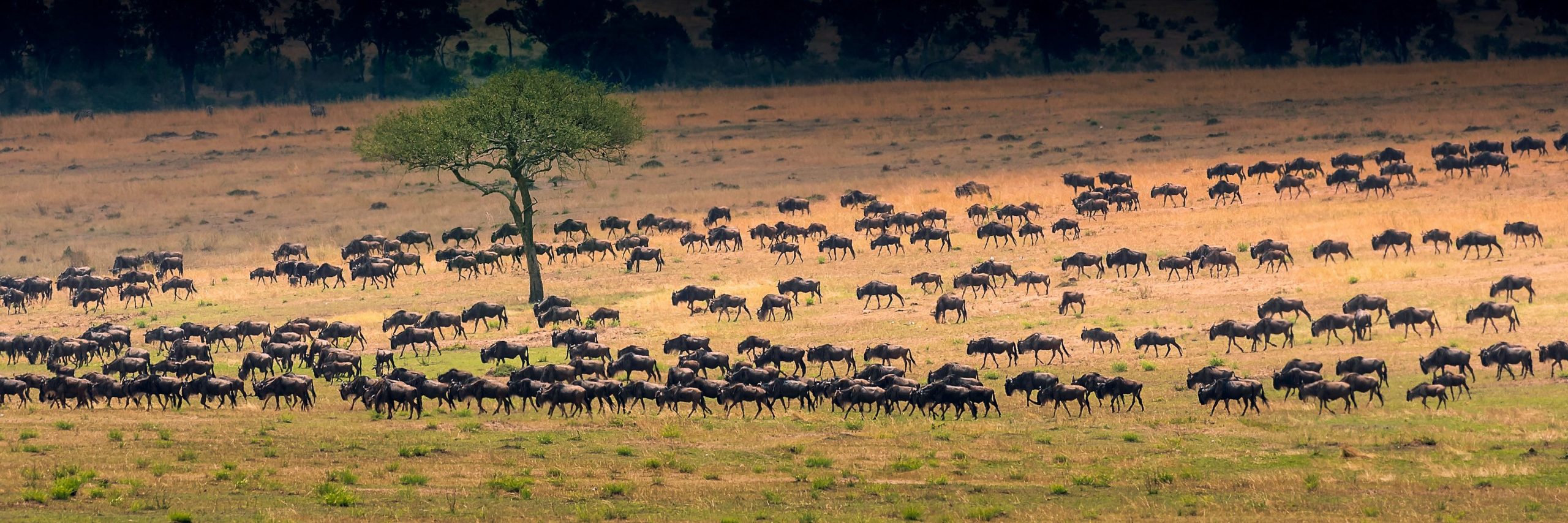News
Successful protected areas are a matter of quality, not just quantity

News | Feb 2021
Migration in North Serengeti. Photo by Hu Chen on Unsplash
Protected areas offer vital solutions to some of the most pressing global challenges including climate change, species extinction, water scarcity, food insecurity and poverty. They provide safe havens for endangered species, store carbon, generate much of our clean air and water, harbour sites of cultural and spiritual importance, and support the livelihoods of millions of people.
Protected areas have a critical role to play in tackling the global nature crisis. However, their success in helping to halt and reverse biodiversity loss depends not just on how big they are or where they are placed, but also critically on their effective and equitable governance and management, as well as how they are integrated into wider landscapes and seascapes.
Current efforts to ensure the effectiveness of existing protected areas lag far behind efforts to designate new protected areas. Expansion is often prioritised over effectiveness of existing areas, despite effectiveness being essential for success. A recent global review of protected area effectiveness reinforced that to be more effective, area-based conservation efforts need to be better funded, climate smart, and equitably managed.
However, it’s challenging to determine globally how effective protected areas are in delivering their conservation objectives.
There is no fit-for-purpose global measure of whether protected areas are delivering the conservation outcomes they were designed to provide. While the global coverage of protected areas is comprehensively monitored in the World Database on Protected Areas (WDPA), many of the elements that indicate the effectiveness of protected areas, such as the adequacy of resources and management capacity, and biodiversity trends in protected areas are not sufficiently tracked locally or globally.
The challenges of measuring effectiveness and the suggested solutions
New research co-authored by UNEP-WCMC experts, outlines the challenges of tracking protected area effectiveness at the global level. Barriers include a lack of resources to collect and maintain data, as well as the broader challenge of developing a system of monitoring protected area effectiveness that allows for national level flexibility in its use whilst also ensuring global consistency in its compilation.
The authors highlight the urgency of investing in developing consistent indicators that measure the state of biodiversity and the degree of human impact across sites, in a way that can be rolled out across all protected areas in a globally consistent manner. They recommend:
- High quality, regularly updated remotely-sensed global data, accompanied by site-level data on the changing state of nature. This site-level data should be based on finer-scale biodiversity inventories that can capture changes that remotely-sensed measures may not.
- Substantial investments to support the digital infrastructure that is needed to ensure data is maintained and made accessible and available.
- Capacity development for protected area managers and staff to support monitoring - and improving – protected areas management.
Why monitoring effectiveness matters
Monitoring protected area effectiveness is important because it helps to measure and understand the impacts of investments on biodiversity, promote accountability and transparency, and track progress towards conservation targets set at the local, national and global level. Monitoring also allows protected area managers to adapt their practices and allocate resources to the areas that need it most and can help to build awareness of, and support for, protected areas more widely.
If protected areas are to play their full role in conserving nature, efforts to track their effectiveness will need to be stepped up.
UNEP-WCMC is contributing towards this process by working with partners to develop fit-for purpose indicators to track global protected area effectiveness and ensure that relevant data is collected, maintained and made available.
As the world prepares for the expected agreement of the post-2020 global biodiversity framework, there have been many declarations and commitments from national leaders in relation to scaling up protected area coverage. As progress towards the new global framework continues, these steps should be complemented by ambitions and actions towards greater effectiveness, too. The success of the world’s protected areas will depend on both their quantity and quality.
Essential indicators for measuring site‐based conservation effectiveness in the post‐2020 global biodiversity framework is published in Conservation Letters.
Have a query?
Contact us
communications@unep-wcmc.org
